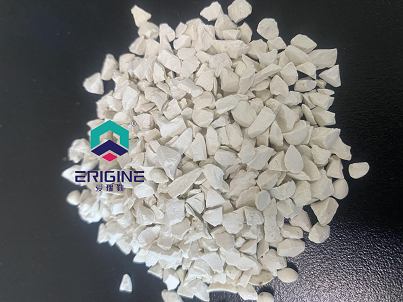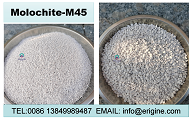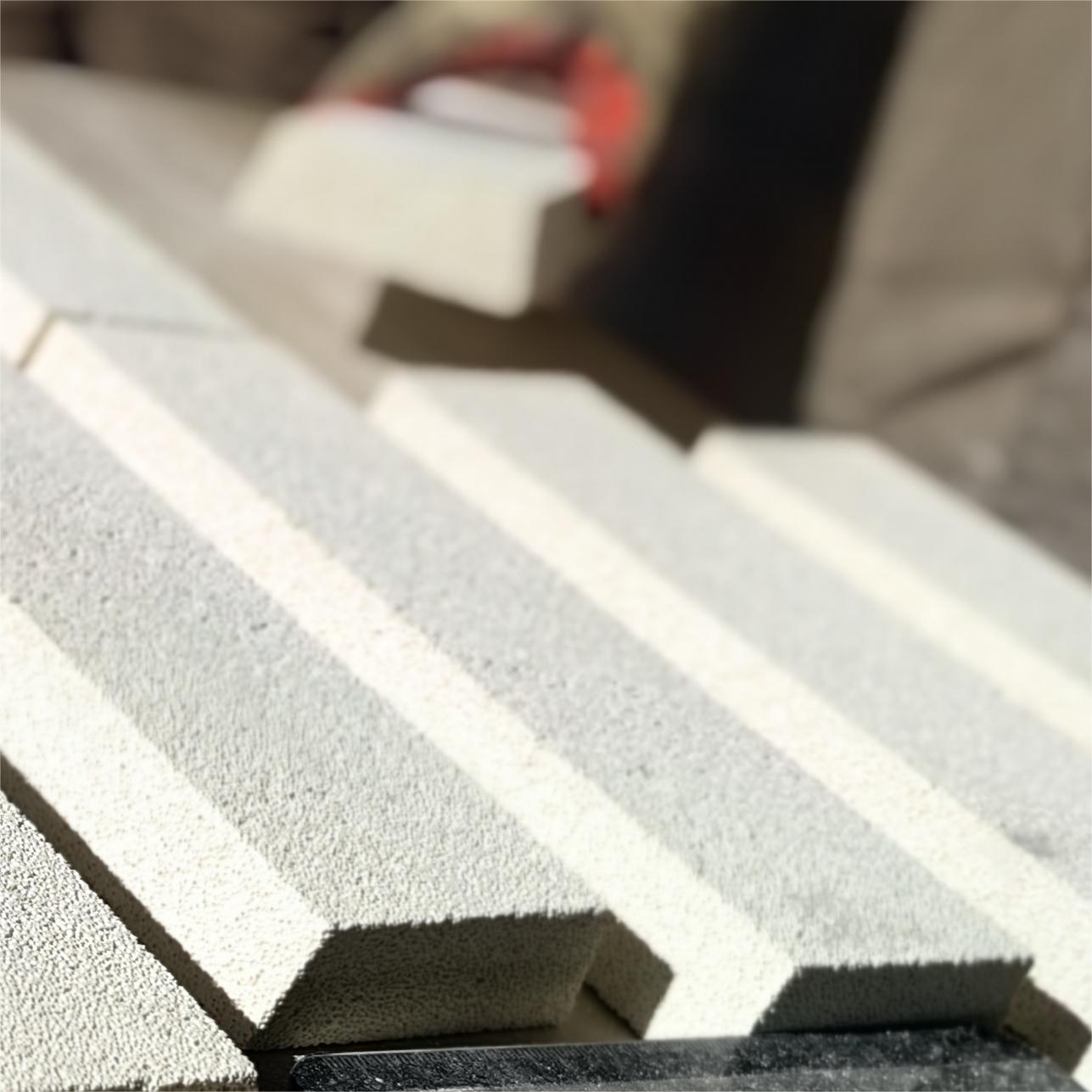+0086-13849989487

Cordierite Manufacturer & Supplier
Cordierite Manufacturer & Supplier As a professional cordierite manufacturer and cordierite supplier, we produce high-quality cordierite ceramics using advanced sintering technology and carefully selected raw materials. Manufactured in our own facilities as a reliable cordierite factory, our cordierite features low thermal expansion, excellent thermal shock resistance, and high bulk density. Our cordierite products are widely used in kiln furniture, refractory slabs, ceramic supports, and automotive ceramic honeycomb applications. With stable performance under frequent heating and cooling cycles, our cordierite is particularly suitable for demanding industrial environments requiring long service life and consistent quality. Cordierite manufacturer, Cordierite supplier, Cordierite factory, Cordierite ceramic, kiln furniture cordierite
2025-12

Erigine Invites You to MTM EXPO · SHANGHAI 2025
Erigine is pleased to announce our participation in MTM EXPO · SHANGHAI, taking place from 2–4 December 2025 at the Shanghai New International Expo Centre (SNIEC).As a professional supplier of mullite-based raw materials and high-performance refractory products, we will showcase a comprehensive range of materials, including:Bauxite-Based MulliteHigh-Purity Fused MulliteHigh-Purity sintered MulliteMolochite M45Mullite-Based Lightweight AggregateSpinel & Cordierite MaterialsBeyond raw materials, Erigine also supplies a variety of finished refractory products, such as:Cordierite-Mullite BricksLightweight Insulating BricksFused Silica Ceramics and Prefabricated ComponentsWe warmly welcome partners from the ceramics, refractories, foundry, and high-temperature industries to visit our booth, explore product solutions, discuss market developments, and discover potential cooperation opportunities. We look forward to meeting you in Shanghai!
2025-11

Molochite-M45: High-Purity Mullite Material with Excellent Thermal Shock Resistance
Operating temperature is 1550°C Calcination temperature (>1500°C) is uniform,resulting in stable mineral phases and consistent quality across production batches. ·The composition consists of mullite crystals and SiO₂ glass, both of which exhibit low and uniform thermal expansion, leading to excellent thermal shock resistance of the product. ·No crystalline SiO₂ phases; the sand particles are angular, rough-surfaced, and can be graded, which enhances the strength of the final product. ·No active high-valence ions, ensuring stable coagulation properties for the prepared coating. ·The sand is hard and wear-resistant, making it difficult to produce secondary dust during use and transportation. Item SiO2 Al2O3 Fe2O3 TiO3 CaO MgO K2O Na2O Molochite-M45 53/55 41/43 ≤0.3 ≤0.8 ≤0.3 ≤0.3 ≤1.5 ≤0.2 Cetrographic Composition Mullite Phase 55 Amorphous Silica Phase 45
2025-10

The Ministry of Industry and Information Technology recently officially released the "Catalogue of Technologies and Products Encouraged for Promotion and Application in the Building Materials Industry (2025 Edition)" (hereinafter referred to as the "Catalogue"). Among the selected technologies and products, high-performance refractory materials are specifically listed as a key category driving the upgrading of high-temperature industries such as cement and glass due to their energy-saving and emission-reduction properties, environmental adaptability, and multi-sector application potential. The market development of these related technologies and products has attracted industry attention.I. The Core Reasons for the Catalogue's Focus on High-Performance Refractory MaterialsFrom the perspective of industry development, the building materials industry is currently promoting a green and high-end transformation under the constraints of the "dual carbon" goals and energy efficiency standards. According to the relevant action plan jointly released by five departments, by 2025, the proportion of production capacity in the cement and flat glass industries that meets benchmark energy efficiency standards must exceed 30%. High-performance refractory materials play a crucial role in improving equipment energy efficiency and reducing energy consumption, making them a key support for achieving this goal.The high-performance refractory materials highlighted in the Catalogue are primarily targeted at high-temperature equipment such as cement kilns and glass kilns, and utilize lightweight, low-thermal conductivity formulations and production processes. Compared to traditional refractories, this type of material specifically addresses the issues of high energy consumption and short lifespan. It is compatible with most kiln equipment and offers practical application value in reducing energy consumption and costs in production. It has already established a solid foundation for industrial application.II. Technical Specifications of Core Products of High-Performance Refractory MaterialsThe Catalog specifies specific technical parameter requirements for selected high-performance refractories. The main products and specifications are as follows:Low-thermal-conductivity multi-layer composite magnesia-iron/magnesia-alumina spinel bricks for cement kilnsVolume density ≥ 2.75 g/cm³;Comprehensive thermal conductivity < 2.2 W/(m・K), 20% lower than traditional magnesia-spinel refractories; Refractoriness under load ≥ 1700°C;Thermal vibration stability (1100°C, water-cooled) ≥ 6 times.Long-life high-zirconium refractory bricks for glass kilnsAt 1300°C, the bubble precipitation rate is zero.Density and element distribution uniformity reaches 99%, and the internal defect and porosity rate is less than 1%.Glass phase exudation is zero, and corrosion and erosion resistance are 3.5 times that of AZS materials.Maximum operating temperature reaches 2000°C.Can withstand a 40-hour 1800°C curve heating cycle, and the structure remains intact after the cycle.III. Advanced Ceramic Products Expand Their ApplicationsIn addition to traditional kiln refractory materials, the Catalogue also includes advanced ceramic products and technologies such as high-performance alumina continuous fibers and products and high-performance silicon nitride ceramic products within the promotion scope:High-performance alumina continuous fibers and productsThe production process utilizes a sol-gel method and dry spinning technology, enabling continuous mass production.The product has an Al₂O₃ content of ≥98%, an α-Al₂O₃ crystal phase, and a continuous operating temperature of up to 1200°C.The single-filament diameter is controlled between 12 and 14 μm, with a density of 3.8 g/cm³, a single-filament tensile strength of 2.8 GPa (gauge length 25.4 mm), and a tensile modulus of 350 GPa.These products exhibit high-temperature oxidation resistance, corrosion resistance, and electrical insulation properties, and can be used in engine components, kiln refractory materials, high-temperature structural ceramics, fire-retardant coatings, and fire-fighting building materials and facilities, aligning with the high-end development advocated by the Catalogue.High-Performance Silicon Nitride Ceramic ProductsThis product category includes three core components: isostatically pressed silicon nitride ceramic balls, high-thermal conductivity substrates, and high-purity silicon nitride powder. Specific performance parameters are as follows:Isostatically pressed silicon nitride ceramic balls: Meet ASTM F2094 2018a, Class I standard, with flexural strength ≥900 MPa, fracture toughness 6-9 MPa・m¹/², HV10 hardness ≥1480 kg/mm², and roundness and batch diameter variation ≤0.1 μm. They are suitable for precision components subjected to high-temperature and high-pressure environments, such as high-end precision machine tool spindles and aerospace engine components.High-thermal conductivity substrates: Thermal conductivity ≥80 W/(m・K) and flexural strength ≥600 MPa. They can be used to address heat dissipation issues in high-temperature equipment and meet the high-temperature operating conditions required in the semiconductor industry.High-purity silicon nitride powder: Contains α-silicon nitride content ≥95% and oxygen content ≤0.8 wt%, providing raw material support for the large-scale production of high-performance silicon nitride ceramic products.IV. Prospects for the Promotion and Application of High-Performance Refractory MaterialsFrom a market and industry perspective, high-performance refractory materials are suitable for applications in high-temperature furnaces for building materials, new energy equipment (such as high-temperature insulation components for energy storage power plants), aerospace, and high-end manufacturing. With increasing requirements for energy efficiency and stability in high-temperature equipment within the building materials industry, and growing demand for domestically produced materials in high-end equipment manufacturing, the market for these products is expected to expand further.In addition to the aforementioned products and technologies, the "2025 Catalogue of Technologies and Products Encouraged for Promotion and Application in the Building Materials Industry" also covers a number of other products and technologies, including thermal insulation materials, wall materials, fireproof materials, glass, concrete, mineral functional materials, graphene, fiber composites, artificial crystals, superhard materials, cement, mining, and prefabricated components. For detailed information on the Catalogue and related technologies, please visit the official website of the Ministry of Industry and Information Technology.
2025-10

Is the bulk density of mullite insulating bricks 0.8 or 1.0? Did you choose the right one?
Comparison of Mullite Insulating Bricks by Bulk DensityBricks with Bulk Density 0.8 g/cm³Low thermal conductivity and excellent insulation performanceLower compressive strengthPoor slag resistance – prone to slag corrosion during useSuitable for applications where insulation is prioritized over mechanical or chemical resistanceBricks with Bulk Density 1.0 g/cm³Better slag resistance – more resistant to slag attack, leading to longer service lifeHigher thermal conductivity – insulation performance slightly reducedSlightly higher compressive strengthSuitable for harsher service environments where chemical resistance and durability are requiredSelection Recommendation When selecting mullite insulating bricks, it is important to choose the appropriate bulk density based on your operating conditions and application requirements.
2025-10